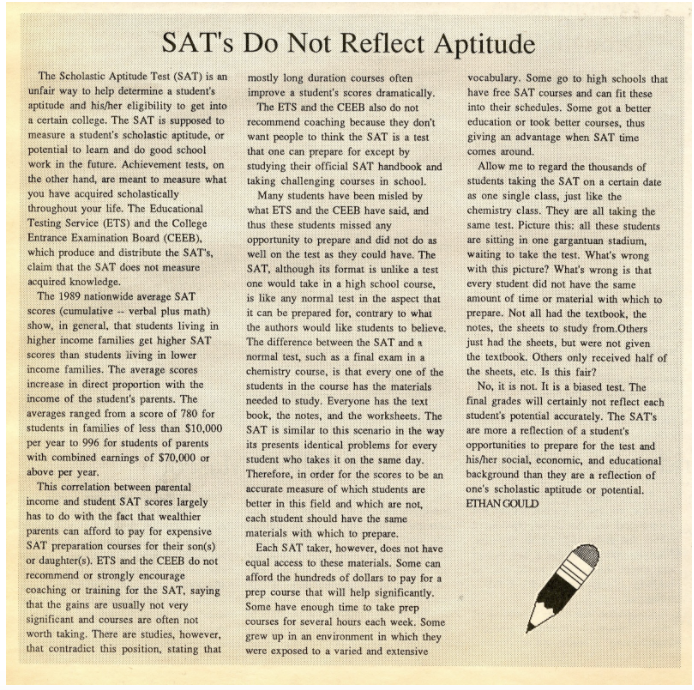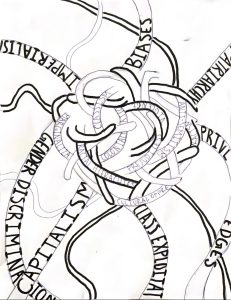A Blast from the Past: February 1998
January 30, 2018
While many opinions change as the years go by, there are some controversial topics that—even 20 years later—garner negative reactions. One of these topics, and one most Rindge students are sure to be familiar with, is the Scholastic Aptitude Test—known more commonly as the SAT.
In the February 1998 edition of the Register Forum, Ethan Gould wrote an opinion titled “SAT’s Do Not Reflect Aptitude.” In the ’80s, the SAT was a completely different type of test, with a different scoring system, different questions, and used as part of a much less competitive college process. In addition, it cost $12 (well, $28 converted to today’s dollar), compared to the $46-$60 range today. 1.2 million students took the test in 1990, compared to the 1.8 million students who took it this past school year.
Despite these changes, Gould’s claim remains relevant. He compares the SAT to a regular test in a high school class: “The difference between the SAT and a normal test, such as a final exam in a chemistry course, is that every one of the students in the course has the materials needed to study.” On the surface the two tests may seem the same—a large number of students taking an exam on the same day, with the same exact questions—but when you go deeper, this is far from the case.
Gould points towards the disparity between low-income and high-income families when it comes to resources for test preparation. Wealthier families may be able to afford a tutor and a preparation class. Low-income families may not even be able to afford the standard preparation book, much less personalized instruction for the SAT. This gap has led to gaps in students scores.
On the 1989 test, Gould cites, “The averages ranged from a score of 780 for students in families of less than $10,000 per year to 996 [out of 1,600] for students of parents with combined earnings of $70,000 or above per year.”
This gap, unfortunately, continues to persist. If anything, it has widened since then. Recent data, taken when the SAT maximum score was a 2,400, has shown that students with wealthier parents score upwards of 250 points more on their SAT than families in the lowest income bracket. The gap is not closing.
Gould ends his piece by painting a picture for the reader—one eerily similar to the current standardized testing scenes of today. He writes,“Picture this: All these students are sitting in one gargantuan stadium, waiting to take the test. What’s wrong with this picture? What’s wrong is that every student did not have the same amount of time or material with which to prepare.”
“Not all had the textbook, the notes, the sheets to study from. Others just had the sheets, but were not given the textbook. Others only received half the sheets, etc. Is this fair?”
This piece also appears in our January print edition.










